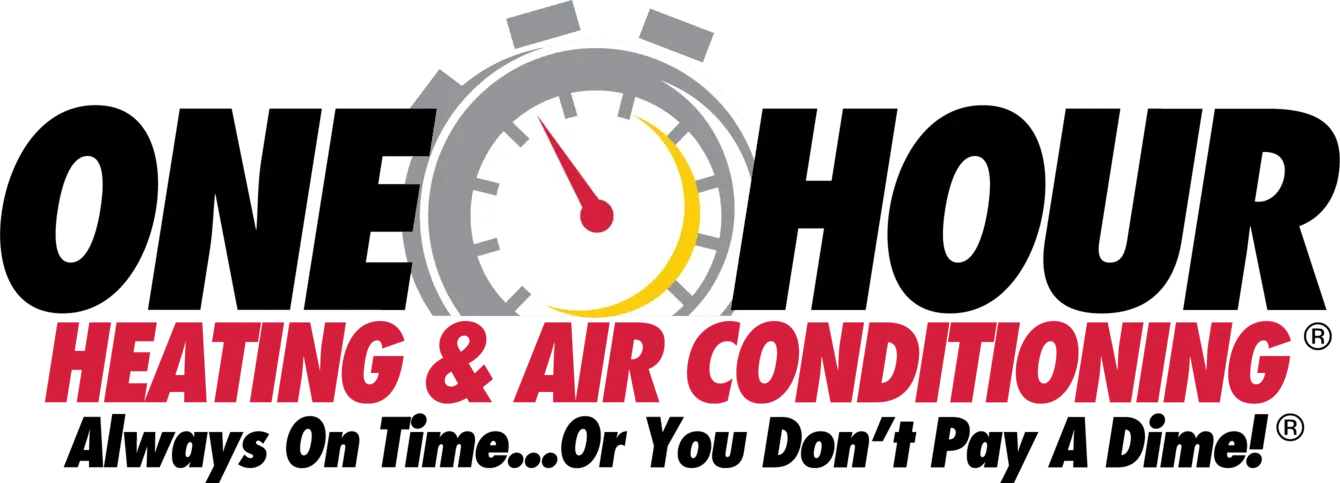What to Do If Your AC Isn’t Keeping Up with the Heat
When the temperature outside climbs, you expect your air conditioner to keep things comfortable indoors. But sometimes, your AC system lags, leaving your home sticky and overheated and in need of air conditioning repairs. This is frustrating, but it's also a problem you can fix with the right approach. At One Hour Heating & Air Conditioning Manalapan, we know that no one wants to sweat their way through the hottest months in Manalapan.
Low Refrigerant and Loss of Cooling Power
Low refrigerant often plays a significant part when your air conditioner struggles to keep up with rising temperatures. Refrigerant moves heat from inside your home to the outdoors, and when levels drop, the system loses its cooling strength. You may notice the air from your vents feels lukewarm or that your system runs longer without making the house any cooler. Ice might form on the outside lines or the indoor evaporator coil if the refrigerant falls too low. You can't fix it by topping it off yourself because refrigerant issues usually point to a leak somewhere in the system. If your AC worked fine last summer but suddenly can't keep your space comfortable, a technician must check for leaks and repair the problem. Catching a refrigerant issue early prevents damage to your compressor, saving you from an even bigger repair later.
Dirty Coils Blocking Airflow
Another common reason your AC can't cool properly is that it sits quietly in the background. Dirt, dust, and debris collect on the evaporator and condenser coils, and once enough builds up, your system cannot move heat efficiently anymore. Indoor coils get clogged with household dust, pet hair, and even cooking grease. Outdoor coils trap grass clippings, pollen, and leaves. You might notice weak airflow from your vents or higher indoor humidity because the coils cannot remove moisture like they should. Cleaning your coils during a regular maintenance visit removes the buildup and lets your system breathe again. If your air conditioner looks clean from the outside but keeps falling behind, dirty coils could still be the cause, hidden deeper inside the unit. A professional cleaning clears the path for cooler air to circulate and helps your system regain the energy it lost trying to work through the mess.
Thermostat Troubles That Confuse Your System
Sometimes, the trouble doesn't start inside the air conditioner. If your thermostat misreads the room temperature, it might shut your system off before it should or leave it running longer without reaching the right setting. Older thermostats can lose their calibration or develop wiring problems that cause them to send mixed signals. You might see your AC turn on and off too frequently or blow cold air inconsistently. Even the thermostat's location affects its performance. If it sits in direct sunlight or near a heat source like a kitchen, it can misjudge the real temperature inside your home. Switching to a smart thermostat can help your system stay on track by reading temperatures more accurately and adjusting to daily swings. When your AC seems to run at the wrong times, checking the thermostat first is a smart place to begin.
The Reality of an Aging AC Unit
Every air conditioner, no matter how well you care for it, has a natural lifespan. If yours is over 10 years old, you might notice small signs of decline that add up when the summer heat rolls in. Your system might take longer to cool the house or struggle to lower the humidity even when it runs nonstop. Odd sounds like rattling, buzzing, or clicking during startup could signal that internal parts are wearing down. Repairs on aging units tend to become more frequent and expensive because critical components like the compressor or fan motor wear out. Keeping up with regular maintenance can stretch the life of your AC, but at some point, replacing it makes more sense. If your system works harder every year with worse results, it might be time to start planning a new installation.
Spotting the Early Signs of Performance Drops
Small changes in your AC’s behavior often point toward larger problems brewing beneath the surface. A slight increase in energy bills could mean the system needs longer cycles to reach the same temperatures. Hot spots or inconsistent cooling across rooms often hint at airflow problems or duct leaks. Short cycling, where the system turns on and off rapidly, usually signals a problem with sensors, refrigerant levels, or the thermostat. If your system suddenly struggles to pull humidity out of the air, the evaporator coil might be dirty, or the refrigerant might be low. Paying close attention to these early signals helps you get ahead of serious repairs. Even if the house still feels mostly cool, an AC that behaves differently than it did last year deserves a closer look before summer puts more strain on it.
Why Early Diagnostics Matter
Waiting until your AC stops cooling often leads to bigger headaches than catching a problem early. Small repairs like topping off refrigerant, fixing a wiring problem, or cleaning dirty coils take less time than replacing major components that break down after running under stress. Scheduling a diagnostic check when you first notice a performance dip helps you avoid emergency calls during the hottest part of the season. Early diagnostics also give you a chance to fix minor issues before they cause hidden damage inside the compressor, blower motor, or other vital parts. By tackling problems while they are still manageable, you save money, time, and frustration.
Advantage of AC Repair Services Before Summer Hits
Taking care of repairs before the real heat kicks in gives you a huge advantage. Early season service means technicians are more available, parts are easier to order, and you avoid the rush that always happens during the first big heatwave. Air conditioners running with even small problems lose efficiency quickly when temperatures soar. A system that can handle an 80-degree day might buckle when faced with 95 degrees unless it operates at full strength. By booking a repair service ahead of peak season, you can spot hidden problems like refrigerant leaks, fan issues, or dirty coils before they leave you sweating through a weekend. Early repairs also give your system a better chance to run smoothly all summer without sudden interruptions when you need it the most.
Common Questions We Get About AC Repair
If your air conditioner runs but doesn't cool the house, low refrigerant, dirty coils, thermostat issues, blocked ducts, or even a failing compressor might be the reason. It usually takes a professional diagnosis to find the exact cause before it worsens. Deciding whether you need a repair or a full replacement depends on a few things, like how old your system is, how often it breaks down, and whether it still cools evenly without driving up your energy bills. Systems over 10 years old that need frequent service often make better financial sense to replace rather than repair. Sometimes, the thermostat creates bigger problems than the air conditioner itself. If you are still using an older manual model or your programmable thermostat cannot seem to keep temperatures steady anymore, upgrading to a smart thermostat can help tighten up your system’s performance. A more accurate thermostat can also catch early signs of cooling problems before they become major repairs.
Stay Comfortable and Cool This Summer
Paying attention to small warning signs, keeping up with maintenance, and knowing when it is time for expert help can keep you comfortable no matter how high the temperatures climb. If you are ready to get your home feeling cool and comfortable again, the One Hour Heating & Air Conditioning® team would be happy to help you make it happen. We also offer 24/7 emergency repairs, air conditioning installation and maintenance, heating system services, ductwork solutions, indoor air quality enhancements, and thermostat repairs, all backed by a 100% satisfaction guarantee. Give us a call today!















